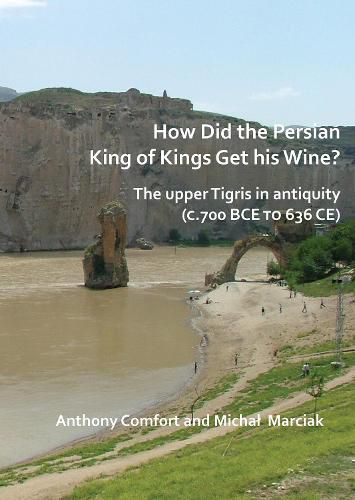Readings Newsletter
Become a Readings Member to make your shopping experience even easier.
Sign in or sign up for free!
You’re not far away from qualifying for FREE standard shipping within Australia
You’ve qualified for FREE standard shipping within Australia
The cart is loading…






How did the Persian King of Kings Get His Wine? the upper Tigris in antiquity (c.700 BCE to 636 CE)‘ explores the upper valley of the Tigris during antiquity. The area is little known to scholarship, and study is currently handicapped by the security situation in southeast Turkey and by the completion during 2018 of the Ilisu dam. The reservoir being created will drown a large part of the valley and will destroy many archaeological sites, some of which have not been investigated. The course of the upper Tigris discussed here is the section from Mosul up to its source north of Diyarbakir; the monograph describes the history of the river valley from the end of the Late Assyrian empire through to the Arab conquests, thus including the conflicts between Rome and Persia. It considers the transport network by river and road and provides an assessment of the damage to cultural heritage caused both by the Saddam dam (also known as the Eski Mosul dam) in Iraq and by the Ilisu dam in south-east Turkey. A catalogue describes the sites important during the long period under review in and around the valley. During the period reviewed this area was strategically important for Assyria’s relations with its northern neighbours, for the Hellenistic world’s relations with Persia and for Roman relations with first the kingdom of Parthia and then with Sassanian Persia.
$9.00 standard shipping within Australia
FREE standard shipping within Australia for orders over $100.00
Express & International shipping calculated at checkout
How did the Persian King of Kings Get His Wine? the upper Tigris in antiquity (c.700 BCE to 636 CE)‘ explores the upper valley of the Tigris during antiquity. The area is little known to scholarship, and study is currently handicapped by the security situation in southeast Turkey and by the completion during 2018 of the Ilisu dam. The reservoir being created will drown a large part of the valley and will destroy many archaeological sites, some of which have not been investigated. The course of the upper Tigris discussed here is the section from Mosul up to its source north of Diyarbakir; the monograph describes the history of the river valley from the end of the Late Assyrian empire through to the Arab conquests, thus including the conflicts between Rome and Persia. It considers the transport network by river and road and provides an assessment of the damage to cultural heritage caused both by the Saddam dam (also known as the Eski Mosul dam) in Iraq and by the Ilisu dam in south-east Turkey. A catalogue describes the sites important during the long period under review in and around the valley. During the period reviewed this area was strategically important for Assyria’s relations with its northern neighbours, for the Hellenistic world’s relations with Persia and for Roman relations with first the kingdom of Parthia and then with Sassanian Persia.